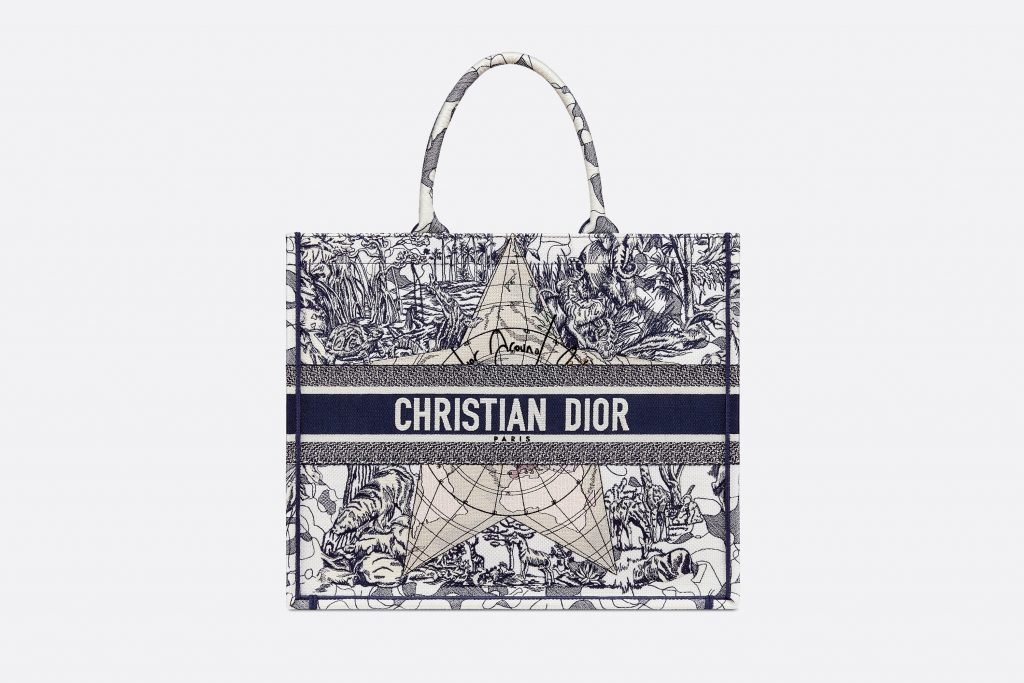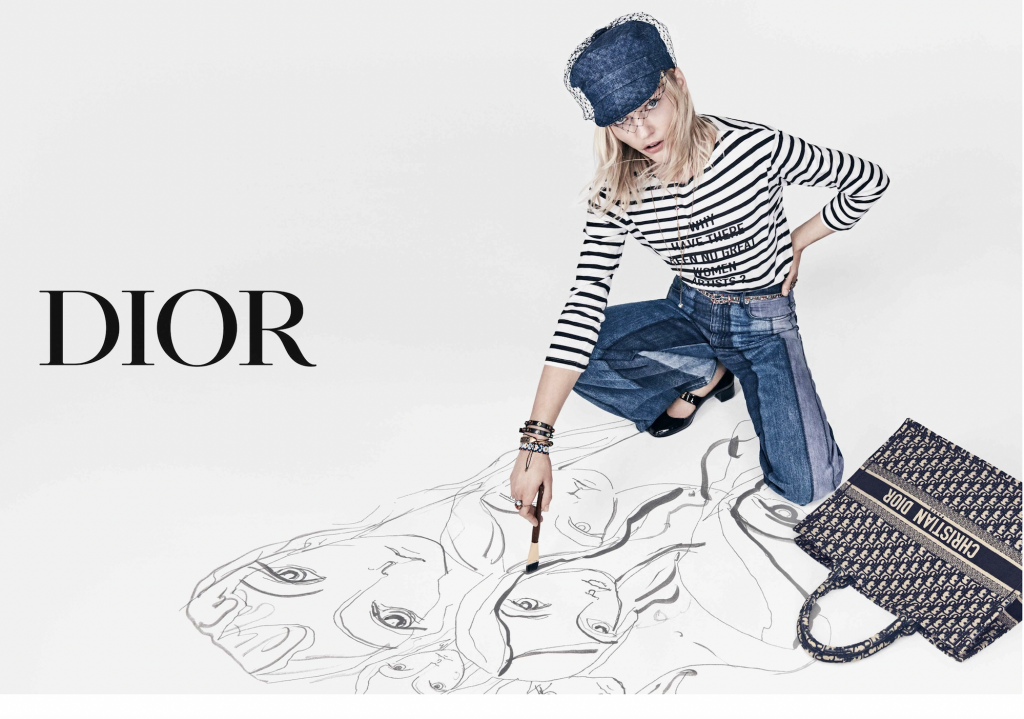Dior has nabbed a win in the handbag-centric case that it initiated in Genoa, Italy against a third-party for selling counterfeit versions of the popular Book Tote bag that it first released as part of creative director Maria Grazia Chiuri’s Spring/Summer 2018 collection. In a preliminary decision dated June 3, the District Court of Genoa determined that specific elements of popular bag – namely, the five-stripe motif that appears on the frequently-customized bag – are capable of indicating a single source of goods, and with that in mind, the court held that the placement of the stripes act as a legally-protectable trademark for the 75-year-old, LVMH-owned fashion brand, in much the same way as the Dior name does.
“As a distinctive Dior trademark, these five alternating horizontal stripes thus benefit from exclusive trademark protection, making it possible to identify Dior creations independently of the Christian Dior inscription,” Paris-based Dior said in a statement on Monday. “This recognition of the five stripes as Dior property is an important court/legal precedent, as such trademark is used on the ensemble of Dior products, above and beyond the Dior Book Tote.”
According to WWD, “Dior launched the legal proceedings in Italy against a counterfeiter who sold fake Dior Book Tote bags,” with Pietro Beccari, chairman and chief executive officer of Christian Dior Couture, noting in the wake of the preliminary decision that the court’s ruling is “significant because it means that Dior can take legal action against anyone using its signature stripe motif [alone], even if they do not use the brand name.”

The decision comes as Dior has been filing for – and in at least some cases (so far) – receiving trademark registrations for a mark that consists of the words “Christian Dior” situated inside of a five-stripe design that mirrors the configuration of elements that appears on the $3,000-plus Book Tote bags, which have saturated the mark over the past several years (thanks, in part, to some significant gifting by the Dior brand). Counsel for Dior first filed an application for registration for the mark with the French trademark office back in March 2020m and has since filed applications for registration for the “Words in [a] Ribbon” mark for use on eyewear, jewelry, leather goods (including bags), apparel, and footwear, among other things, in Australia, New Zealand, Canada, Singapore, Malaysia, and Thailand. Dior has also filed additional applications in its native France, as well as with the European Union Intellectual Property Office.
Even with such applications and registrations in mind, the decision from the court in Genoa is a noteworthy one, as it provides Dior with broader protection (in that jurisdiction) than the “Words in [a] Ribbon” mark does, as it extends to instances in which the five stripes are used without the also-trademark-protected “Christian Dior” name. As such, protections for the stripe motif, alone – i.e., without the use/placement of Dior name – widens the pool of potential parties that may end up on the receiving end of counterfeiting and/or trademark infringement claims from Dior should they replicate the stripe design but not the famed fashion brand’s name.
As we noted in connection with the recent registration of a number Nike sneaker silhouettes without the Beaverton, Oregon-based sportswear titan’s Swoosh logo, it is not uncommon for counterfeiters to attempt to piggyback on the appeal of Nike’s silhouettes while simultaneously looking to sidestep trademark liability by opting not to use the Swoosh. The same likely has also inevitably applied to the use of elements of Dior’s Book Bag in connection with the widespread copying of the bag, albeit instead of the Swoosh logo, bad actors remove the Dior name.
Not the only bag-specific protections that Dior is currently claiming, the brand is in the midst of trademark proceedings in the U.S. in furtherance of its quest to nab registrations for the appearance of its iconic saddle bag (the brand has faced pushback from the U.S. Patent and Trademark Office since it filed an application for the design of the bag last year), and for what appears to be just the flap of the saddle bag (i.e., a mark that consists of “a design with a straight line across the top with a curved line extending from the left side of the straight line down and to the right connecting on the right to the top line.”). Both of those applications – in which Dior essentially asserts that the design elements, alone, are capable of indicating to consumers the source of the products upon which they appear without the Dior name – are still pending before the USPTO.













